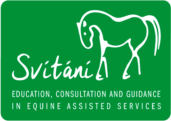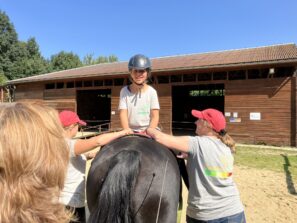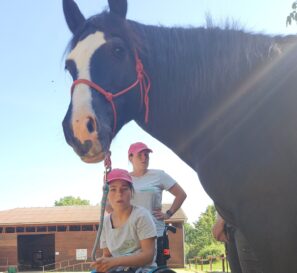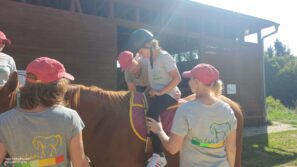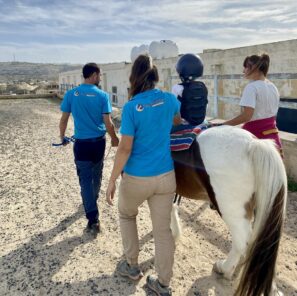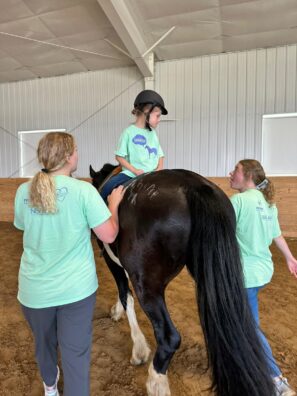Enhance your therapy practice and join our extensive course for therapists
Equine Assisted Therapy Basic
...Applications for Physical, Occupational and Speech Therapists

E-learning - 100 hours

Face to face 5 days - 40 hours
Self-study - 60 hours
This course has been designed to take place in your country, at your organization. If you're interested, please reach out to us at vera@hipoterapie-kurzy.com for further information and inquiries.
Equine Assisted Therapy (EAT) is a specialized rehabilitation approach employed by physical, occupational, and speech therapists to address a wide range of movement disorders in both children and adults. This therapy capitalizes on the distinctive blend of three-dimensional movement offered by the equine's back, the live animal element, and the outdoor environment, making it a highly accepted and effective form of treatment.
Why should you attend this course?
We are aware that therapists require not only theoretical knowledge but also the practical know-how to implement these methods in their clinics. That's why we place a strong emphasis on hands-on skills during the practical part of the course. Our mission is to ensure that our participants are equipped with the practical skills to start implementing what they've learned right away in their own practice, providing them with a comprehensive package of knowledge and skills.
Who can attend?
This course has been specifically designed for physical, occupational, and speech therapists, as well as speech-language pathologists. It aims to provide valuable insights and practical skills for professionals in these fields.
If you are in a different profession and seeking education in Equine Assisted Services, please don't hesitate to contact us here. We may have options and resources available to accommodate your educational needs in this field.
Consider the online Comprehensive Course for Assistants and Introductory Course for Other Specialized Professions.
What will you learn?
Our course focuses on gaining theoretical and practical skills for performing Equine Facilitated Therapy (EAT, formerly hippotherapy). What will you learn?
- The EAT principlesand how it may positively influence human health
- How to utilise all aspects of the stables environmentand the presence of the equine to achieve client's treatment goals
- EAT history and evolutionin the world, EAT associations
- Applying EATby Physical, Occupational and Speech Therapists
- Referral to the EATincluding list of contraindications and precautions
- Determine progress and treatment efficacyevidence based practice, outcome measures and assessment tools, treatment planning
- Therapy positions on the equine backand neurodevelopmental milestones
- EAT treatment applicationsfor common diagnosis
- EAT team membersand their roles
- Factors contributing to safetyin the EFT treatment sessions and program
- Potential emergenciesand appropriate procedures
- Selection and use of EAT equipmentfor the centre, equines and clients
- Documentation and record keepingincluding EAT program administration and funding
- Equine skills and knowledgeequine evolution, body language, health, wellbeing, anatomy and physiology
- Equine movementthe desirable conformation and qualities of the equine movement
- Therapy equinestheir selection, preparation and training
- Equine handling during EATincluding up-to-date approaches to equine welfare
- BONUSgetting in touch with these amazing animals, learn how to care for them, including tacking and riding!
Lecturers
Our courses are conducted by international lecturers who are selected based on their expertise in the field and the relevance to the course's topic and location. You can find more information about our lecturers by visiting this page here.
How does the course work?
Course duration
200hours (100h e-learning, 40h hands-on practice and 60h self-study) + gaining horsemanship skills
E-learning (9 modules)
- Part I - Introductory Course (5 modules)
- Part II - Applications for Physical, Occupational and Speech Therapists (4 modules)
You will receive a username and password to access our online study platform. This allows you to study at your own pace and according to your availability.
Practical part (5 days)
By the end of the week, you will gain substantial hands-on experience, allowing you to apply your practical skills. We will assess multiple clients with different diagnoses and implement EAT treatment sessions. We are here to address and clarify any questions or concerns you may have. A portion of the training will concentrate on becoming proficient in equine handling and preparation.
Self-study
The theoretical aspect of the course is extensive, and in addition to reviewing the literature, you will be required to complete several assignments, including four control tests, a case study, and a virtual center project.
Support
Just like all our courses, this program offers strong support to ensure your continuous progress and prevent any roadblocks. Your lecturers are available to respond to your questions via email, and they will be there in person during the practical week. Additionally, there will be two live Zoom calls: one before the practical part and another before the final exam to provide further assistance and guidance.
Horsemanship skills
It is strongly recommended that participants have at least a minimum level of experience in equine handling and care. As part of the final exam, you will be required to submit a video of a dressage task at a walk and trot. If you do not possess these skills, it is essential to acquire them at your own expense and time. Proficiency in horsemanship is a fundamental requirement for conducting safe and effective treatment sessions.
Final exam
Before taking the final exam, participants are expected to complete the practical part, submit all assignments, and provide a video demonstrating horseback riding skills. The final exam is administered as an online multiple-choice test.
Certificates of completion
The organizer will issue a certificate of completion upon successfully finishing the course.
Course timeline
Registration deadline: 4 weeks prior beginning of the course
E-learning: 9 modules, submitting 4 assignments
Practical part: 5 days consecutively
Submitting a case study deadline: 2 month after the practical week
Submitting a virtual project deadline: 2 month after the practical week
Submitting a video with the dressage test deadline: 2 month after the practical week
Final exam - online test: 2 weeks after submitting the case study
Your gained competency
Our course is designed to help you acquire both theoretical knowledge and practical skills for conducting Equine Assisted Therapy (EAT), formerly known as hippotherapy. Here's what you will learn:
- To apply clinical experience and knowledgewhen carrying out an assessment that is relevant and effective in the equine environment, on the ground and when mounted
- The competency to use clinical experienceand equine characteristics to plan an EAT program following the initial and ongoing assessments of the client
- The ability to facilitate a safe and effective EAT treatmentbased on observation of, and reaction to non-verbal human-equine interaction
- The ability to plan a goal specific EAT interventionto meet the client's needs and to adjust if required
- To identify when EATis an appropriate and beneficial treatment choice
- The ability to adapt the handling techniquesand the client's positions to meet the specific treatment goals, using ergonomic principles
- The ability to evaluate any client's reactionwith different equine movement and to provide an EAT intervention under any circumstances
- Selecting the method of mounting and dismountingwith the equipment available in accordance with the treatment goals and the client´s needs
- Expertise in selecting the most suitable equinefor the client based on knowledge of conformation, temperament and movemen
- Expertise in selecting special tack and equipmentbased on the needs of the client and the treatment goals
- Expertise in observing and reacting to the equine, clientand environment to facilitate a safe and effective treatment session for all involved
- The ability to document effectivelyand accurately the influence of the equine and its effect on the client
- To demonstrate confident team leadershipat all times and maintain privacy under all circumstances
Registration and payment
Registration process
To maintain an individualized approach, the course is limited to a maximum of 16 participants. Each potential participant must complete and submit a registration form. After reviewing your submission, you will be informed about your acceptance into the course, and the payment process will be discussed and agreed upon with the organizer. This approach ensures that you receive personalized attention and a quality learning experience.
GDPR
The organiser will collect your personal data in the scope of the name, email address, and telephone for communication purposes till your written withdrawal.
Price: This course has been designed to take place in your country, at your organization. If you're interested, please reach out to us at vera@hipoterapie-kurzy.com for further information and inquiries.
Your course includes
- Online and practical parts, final exam, certificate of completion
- Full content of the e-learning in a digital book at the end of the course
- During the course and after, you can consult your lectors by email with your inquiries
Bonuses
- You will receive all the future e-learning additions and edits for Free
- Access to a particular FB community group to connect the EAS practitioners to share your experience
